|
134 (Bedford) Sqn Air Cadets |

|
| < 2nd May 2005 - New Addition to the Fleet | 17th May 2005 - 62 Years on - Dambusters Raid Remembered > |
Press Release |
134 (Bedford) Squadron |
11th May 2005
Rotary Jointery
If you want to fly in the Armed Forces you don’t have to join the Royal Air Force. The British Army has its own air support section called the Army Air Corps and 12 cadets from 134 (Bedford) Squadron visited them to find out more about Army aviation.
Upon arrival at the home of the Army Air Corps at Middle Wallop we started with a tour of the Museum of Army Aviation given by the curator, Colonel Patterson. He explained how the Army has in fact been flying longer than either the Navy or the RAF having started with balloons and kites to spy on the enemy. Col Patterson went on to show the cadets how aircraft types had progressed within the Army; they saw how huge gliders carried tanks in the Second World War and why small planes were used as air taxis. Rounding off with the helicopters with which the Army Air Corps (AAC) has become associated with today and describing how they have developed into front line fighting machines.
Next, our host for the day; Captain Jones gave an interactive presentation on joining the AAC as pilot. Unlike the RAF and Navy you can become a pilot in the Army as a non commissioned officer (Sergeant or Staff Sergeant) however Captain Jones concentrated on direct entry as a commissioned officer. She explained the various aircraft types flown by the army and their various roles; she spoke about the training programme for a pilot and outlined the academic and medical entry requirements.
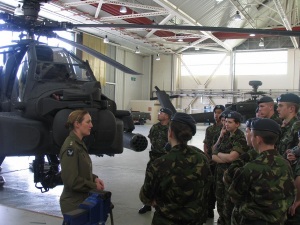
The busy day continued with a chance to get up close to one of the latest aircraft in the Army’s inventory, the Westland Apache. Captain Jones first took the cadets on a walk-round of the aircraft taking time to explain the various components of the aircraft including the engines, systems and weaponry while answering all manner of questions. She then invited the cadets to take a close look at the cockpit with a lucky few getting the chance to sit in the rear pilots’ seat.
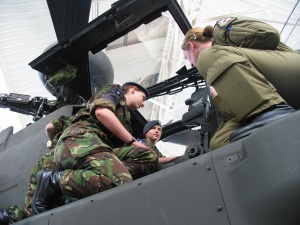
Moving on to the adjacent Hangar everyone received a safety briefing for the Gazelle helicopter, which the army uses in the communication and observation role. The Gazelle is a small, single engine aircraft and the difference in technology from the Apache was very clear to see. The cadets took amusement in the fact that the helicopter is fitted with Renault door handles.
Jumping into the minibus we then drove for 20 minutes to Everliegh Down, a dropping zone located on Salisbury Plain in Wiltshire where we had to rendezvous Captain Jones in the Gazelle. By using Everliegh we were free of the busy air traffic around Middle Wallop, which allowed more freedom to fly. Cadet Warrant Officer Croft had not travelled in the bus with the rest of the group, but instead caught a lift in the Gazelle.
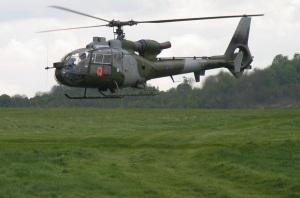
In groups of 3 the cadets were fitted with passenger helmets and under the supervision of AWO Browne were walked out to the aircraft and strapped in. The pilot was able to demonstrate the flying controls of the helicopter to the cadets by performing climbs, dives and by rolling to the left and right. The acrylic bubble canopy of the Gazelle afforded fantastic views and opportunities to take some great aerial photos, including ones of other aircraft such as Lynx, Squirrels and Chinooks’, which were also operating in the area.
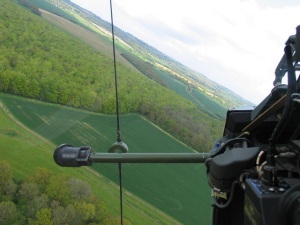
When everyone had flown we thanked our pilot and host for the day the cadets waved as Captain Jones performed a flypast before departing for home.
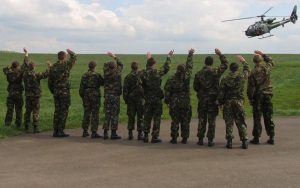
For more information on the Army Air Corps why not visit their page on the Army website by clicking on the link below?
http://www.army.mod.uk/armyaircorps/index.htm